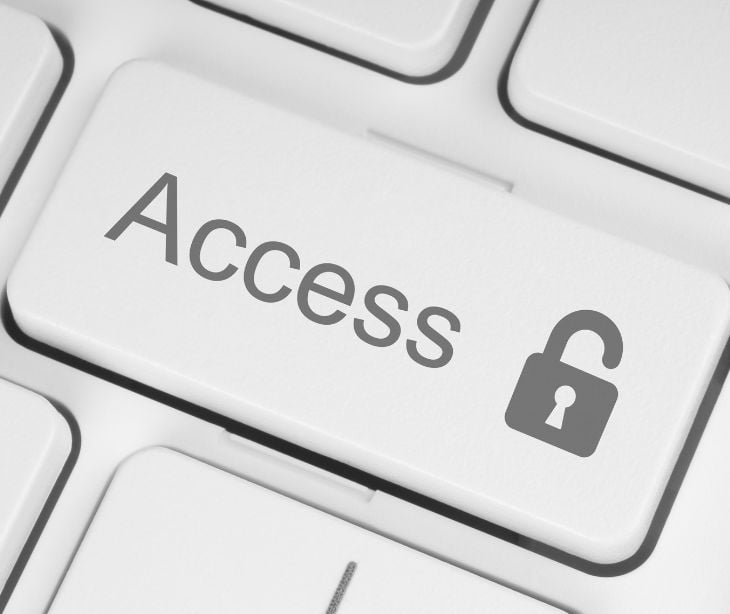3 min read
Technical safeguards for a HIPAA compliant mental health website
Liyanda Tembani
May 26, 2023

Compliance with the Health Insurance Portability and Accountability Act (HIPAA) is required for mental health practice websites that handle protected health information (PHI). Various technical safeguards can be implemented to protect sensitive patient data and maintain the trust and confidentiality necessary in the mental health field.
1. Secure website hosting
Look for hosting providers that offer HIPAA compliant hosting services specifically designed to meet the stringent security requirements of electronic PHI. These hosting services provide physical and electronic security measures, including secure data centers with controlled access, firewalls, intrusion detection systems (IDS), and advanced network security protocols. They also ensure regular backups of your data and have disaster recovery plans to minimize downtime in case of a breach or system failure.
Related: HIPAA compliant WordPress hosting: A comprehensive guide
2. SSL encryption
Secure Sockets Layer (SSL) and its successor, Transport Layer Security (TLS), ensure that data transmitted between your website and users is encrypted and protected against unauthorized access.
To implement SSL encryption, obtain an SSL/TLS certificate from a trusted certificate authority (CA). This certificate validates your website's identity and enables HTTPS protocol.
Most web hosting providers offer integrated SSL/TLS certificate management, making the process easier for website owners.
Additionally, consider implementing HTTP Strict Transport Security (HSTS) to enforce the use of HTTPS and prevent downgrade attacks. HSTS instructs web browsers to always connect to your website using HTTPS, even if a user tries to access it via an insecure HTTP link.
3. Access controls
Implementing robust access controls helps protect electronic PHI by ensuring that only authorized individuals can access sensitive information. Consider these measures:
- User authentication: Implement a user authentication system that requires strong passwords and username requirements. Encourage users to create complex passwords and enforce policies for password complexity, such as minimum length, and the inclusion of uppercase and lowercase letters, numbers, and special characters. Enforce regular password changes to minimize the risk of compromised accounts.
- Two-factor authentication (2FA): Implementing two-factor authentication adds an extra layer of security by requiring users to provide an additional verification factor, typically a unique code sent to their mobile device, in addition to their password. This significantly reduces the risk of unauthorized access even if passwords are compromised.
- Role-based access control(RBAC): Use RBAC to assign access privileges based on job roles and responsibilities. Limit access to electronically stored PHI on a need-to-know basis, ensuring that only authorized individuals can view or modify sensitive information. Regularly review and update user roles as staff responsibilities change within your practice.
4. Regular backups
Backups should be performed securely and frequently to minimize the risk of data loss. Consider using cloud-based backup services that specialize in HIPAA compliance. These services encrypt your data during transmission and storage, ensuring it remains secure. They also provide redundancy and off-site storage, safeguarding your data in case of hardware failures or natural disasters. Set up automated backup schedules to ensure regular and consistent backups.
Alternatively, you can perform backups using external hard drives or network-attached storage (NAS) devices. Make sure to encrypt the backup data and store it in a secure location, preferably off-site, to protect against physical theft or damage.
5. Audit controls
Implementing audit controls enables you to track and monitor all access to electronic PHI data, helping you identify and respond to potential security breaches. Here's how you can implement audit controls effectively:
- Logging and monitoring: Enable logging and monitoring mechanisms on your website and server to record all access attempts, including successful and failed login attempts, data modifications, and system events. Implementing intrusion detection and prevention systems (IDS/IPS) can provide real-time alerts for potential security incidents.
- Regular review of audit logs: Assign designated personnel to regularly review audit logs and investigate any suspicious activities or unauthorized access attempts. This proactive approach allows you to identify security gaps, respond promptly to incidents, and implement necessary security measures.
- Incident response plan: Develop an incident response plan outlining the steps to be taken in case of a security breach or unauthorized access. This plan should include procedures for notifying affected individuals, documenting the incident, containing the breach, and restoring the integrity of the affected systems.
Related: EHR Snooping: Tackling unauthorized access and strengthening trust
6. Employee training
Properly trained employees are crucial for maintaining HIPAA compliance and safeguarding electronically stored PHI. Implement a comprehensive training program that covers key topics, including:
- HIPAA regulations and policies: Educate employees on HIPAA regulations, the importance of patient privacy, and the consequences of non-compliance. Ensure they are aware of your practice's specific policies regarding electronic PHI access, handling, and disclosure.
- Password security: Train employees on the importance of strong passwords, password hygiene, and the risks associated with password reuse or sharing. Encourage the use of password managers to securely store and generate strong, unique passwords.
- Incident reporting: Establish clear procedures for reporting security incidents, data breaches, or suspected unauthorized access. Encourage employees to report any potential security concerns promptly to the designated personnel.
- Ongoing training and refreshers: Offer regular training sessions and refreshers to keep employees updated on emerging security threats, new HIPAA requirements, and best practices for data protection.
Ensuring HIPAA compliance for your mental health practice website requires the implementation of robust technical safeguards. By following the steps outlined above, you can significantly enhance the security of your website and protect sensitive patient information.
Subscribe to Paubox Weekly
Every Friday we'll bring you the most important news from Paubox. Our aim is to make you smarter, faster.



